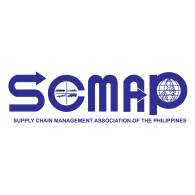 I have just finished writing an article for the upcoming issue of Supply Chain Philippines, SCMAP’s magazine —it will drop just in time for the 2017 SCMAP Supply Chain Conference, happening in a couple of weeks’ time. It was about autonomous trucks, just one of the many new automated technologies looking to change the way we work in supply chain.
I have just finished writing an article for the upcoming issue of Supply Chain Philippines, SCMAP’s magazine —it will drop just in time for the 2017 SCMAP Supply Chain Conference, happening in a couple of weeks’ time. It was about autonomous trucks, just one of the many new automated technologies looking to change the way we work in supply chain.
I was surprised to see just how far we’ve come with that technology. The focus, all this time, has been on autonomous cars—where the “driver” just has to turn on the vehicle and then sit back as it does the navigating and maneuvering. That is a “sexy” technology: it does sound like it will make for a more comfortable trip, especially long ones.
But entities developing autonomous trucks assert that there are a lot of reasons why we should pursue it. The biggest one is lower costs: while one imagines the initial investment for such trucks is high, they insist the savings generated by more efficient use of fuel and a lower probability of untoward incidents caused by human error will make a return sooner or later. The other argument is safety—for the drivers, who no longer have to stay up all night making the drive; as well as for other vehicles around the truck.
But some are concerned about what this will mean for truck drivers. Will their jobs be eliminated completely? Perhaps, in the long run, but technology has yet to reach that point. The prototypes and concepts we’re seeing now—from auto manufacturers like Volvo, to tech start-ups like Otto, now owned by Uber—still involve drivers, who can take control at any point in the journey. But, theoretically, if they’re doing less, they may be paid less, and that would be a big issue for many.
This is emblematic of a paradox in supply chain management. On one hand, there is the need to keep costs at an optimal level, while keeping service levels high. In some cases, this would mean automation of certain functions. This is already happening in production, especially for mass-produced items.
The distribution aspect of supply chain is also ripe for automation, with several solutions already gaining traction not just in the West, but in Asian countries like Singapore and Thailand. But fully-automated warehouses are still rare, as this requires high levels of investment—and it’s a solution that does not apply to every company. More common are semi-automated systems, where technology assists warehouse workers as they sort, pick and manage inventory. Again, less space for human error, which lead to better service levels.
On the other hand, supply chain management is a field where people are important. No matter how efficient your operations are, people can still negatively impact your service levels, whether it is by mishandling the product, or by being unscrupulous in the procurement process, or by having terrible customer service. Supply chain thrives on relationships between stakeholders, united by the common goal of serving the customer. (That, and making a profit.)
Technology is good, but sometimes we lose sight of the impact it can have on the people we rely on to make our supply chain work.
There’s still a long way to go, of course. Here in the Philippines, the high level of investment needed is a considerable hurdle, even for bigger companies. To return to trucks—our infrastructure is also not up to speed, and arguably, the way our road network works—no dedicated trade lanes, a reliance on congested urban roads—means we’ll never be up to speed. But that doesn’t mean advances in distribution won’t come knocking—and perhaps it may also affect the people that work the front lines, depriving them of decent work, if not work altogether.
During our last Supply Chain Immersion, former SCMAP president Cora Curay called for stronger education for truck drivers, a way to increase their competitiveness and to ensure that they are truly up for the job. Perhaps if we invest more in our people, we don’t have to be too worried about robots, sensors and cameras taking over.
2017 SCMAP Supply Chain Conference: As I mentioned earlier, we are two weeks away from the most prestigious event in the Philippine supply chain industry. With top-notch speakers and attendees from manufacturing, retail, logistics and other stakeholders, this is one event you cannot miss. Register now online, as a sponsor or delegate, at scmap.org.
Henrik Batallones is the marketing and communications executive of SCMAP. A former board director, he is also editor-in-chief of the organization’s official publication, Supply Chain Philippines. More information about SCMAP is available at scmap.org.




